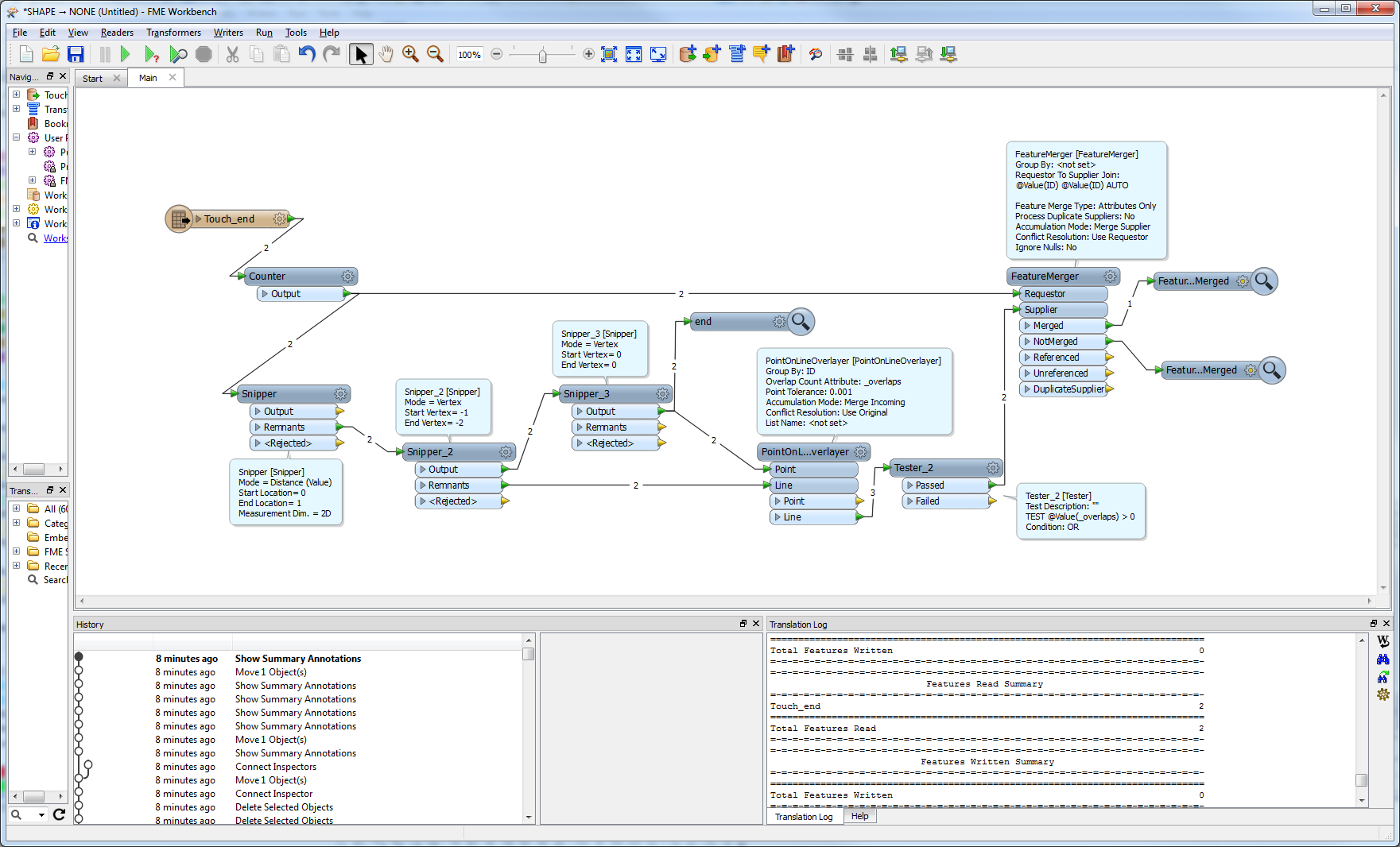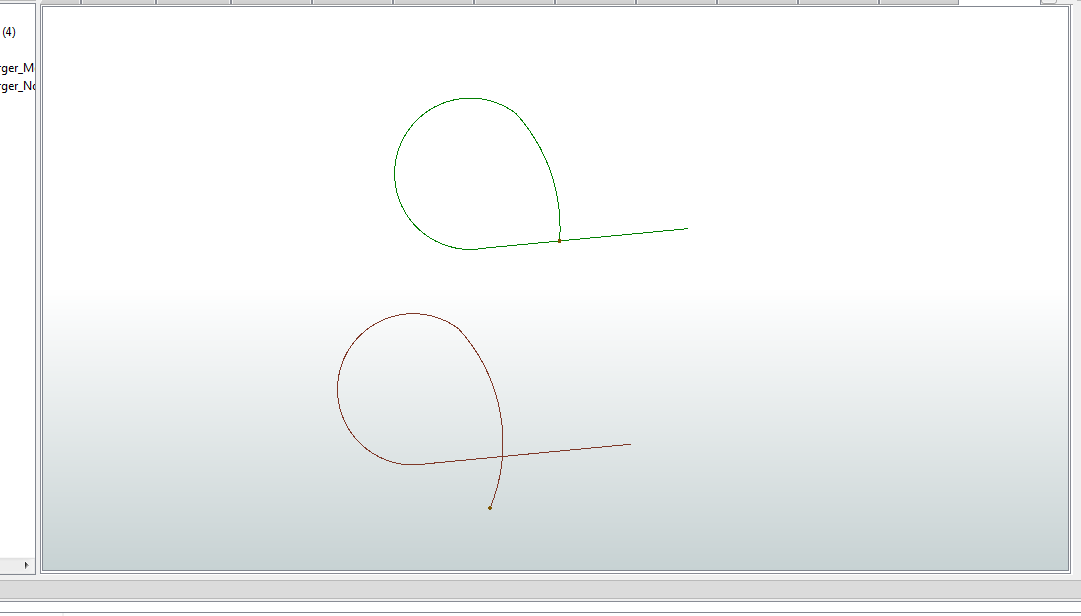Hi!
I am new to FME. I have a set of network data where the network is made of many segments of lines. I am trying to find a way to test the integrity of the network. I have to ensure that no segment of line intersects with itself. I tried SpatialFilter with the "intersect" and "touches" test. That proved positive for all lines. Then I realized it must be true as the lines connect end to end. I need to know which segment connects to itself. Then I tried GeometryValidator and tested of self-intersections in 2D. That can only detect lines that self intersect and crosses. The lines that self intersect on itself without crossing are not picked up.
Can anyone help? Thanks!
Best answer by gio
View original









